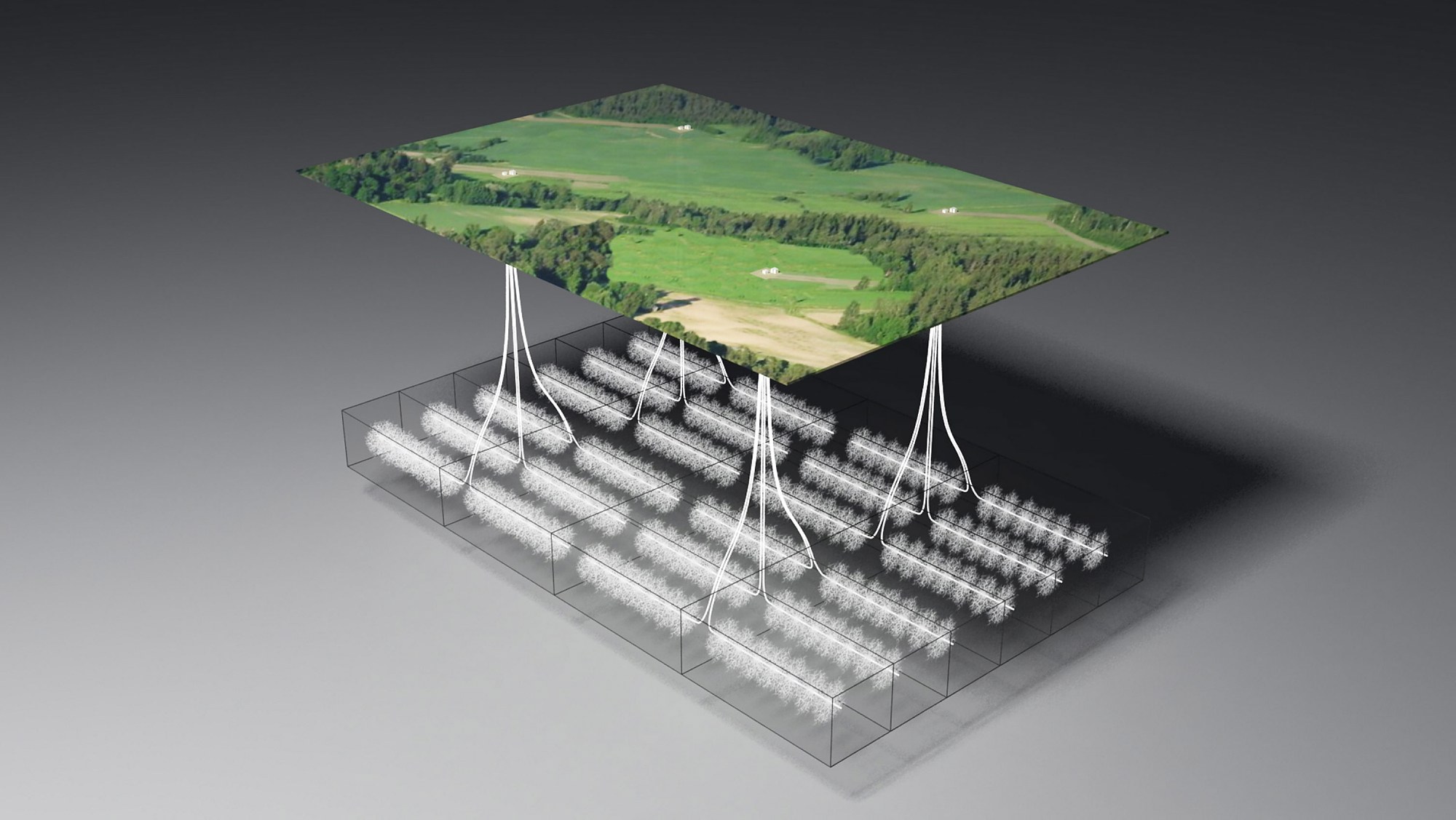The wizards of the oil industry can drill 4 or 6 or more wells on one pad. They’ve also developed self-propelled rigs.
So what, you ask?
That means less time to drill, far less surface disruption, less truck traffic, and more economical infrastructure.
It’s call pad drilling. Here is an illustration:
Photo: Chesapeake / Statoil. Used with permission.
There are 24 wells in that illustration, but the drilling was done from only 4 sites.
The Energy Information Administration discusses this in their article Pad drilling and rig mobility lead to more efficient drilling:
For example, “pad” drilling techniques allow rig operators to drill groups of wells more efficiently, because improved rig mobility reduces the time it takes to move from one well location to the next, while reducing the overall surface footprint. A drilling pad is a location which houses the wellheads for a number of horizontally drilled wells. The benefit of a drilling pad is that operators can drill multiple wells in a shorter time than they might with just one well per site.
In the picture above, each of the four drilling pads hosts six horizontal wells. Pad drilling allows producers to target a significant area of underground resources while minimizing impact on the surface. Concentrating the wellheads also helps the producer reduce costs associated with managing the resources above-ground and moving the production to market.
When a well is completed, the rig needs to be disassembled, moved to a new location and reassembled. This is called “rigging down” and “rigging up.” It takes a lot of time.
New rigs have an ability to “walk’”from one well to another. Combine that with pad drilling and you can save a lot of time. Have the rig side-step a short distance to the new well site and resume drilling. That saves a tremendous amount of time and cost.
Check out this cool time-lapse video that shows a rig side-stepping to a new well. Watch for the feet at the end of the video:
The next step? The cost involved in rigging up and rigging down is so high that it makes sense to build a road between pads and have the rig walk to the next site. The EIA article says:
One of the industry’s more recent innovations, pad-to-pad moves, underscores the efficiency gains from rig mobility and pad drilling. During the drilling operation pictured below, rig operator Nabors Industries transported a fully-assembled drilling rig about one mile between drill sites. The cost of rigging down and rigging back up can be high enough that producers may find it more efficient to build a road between two pads, transport the rig intact, and have it arrive ready to drill the next well.
Check out the photo in the EIA article of a rig walking down the road to the next site.
The application of human ingenuity means getting to oil faster and cheaper than a year ago. With the results of other human ingenuity, such as horizontal drilling (look at that illustration again – changing the direction of the well twice before changing again to the horizontal!) and fracking the drillers can recover what was unimaginable a few years ago. Cool.
(h/t Carpe Diem)

2 thoughts on “Multiple wells drilled on one site and walking rigs. Isn’t human ingenuity grand?”